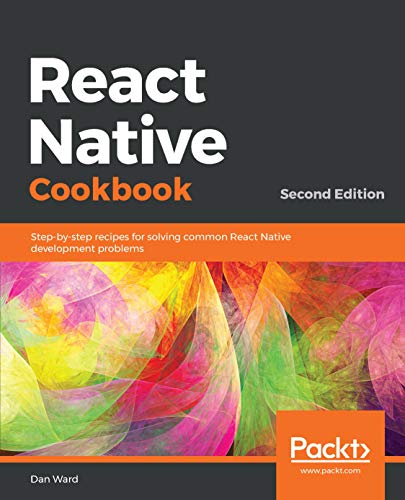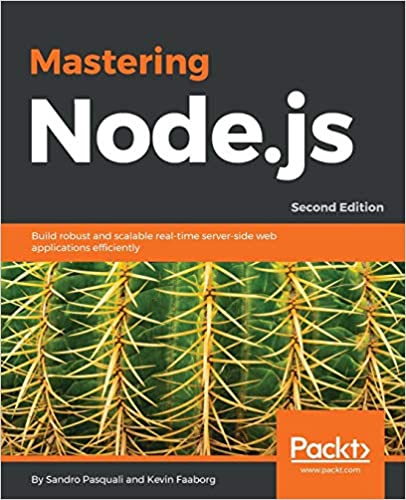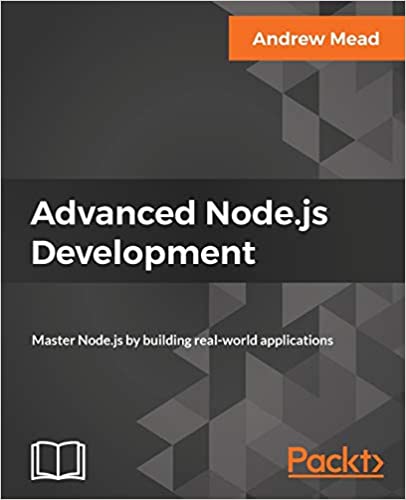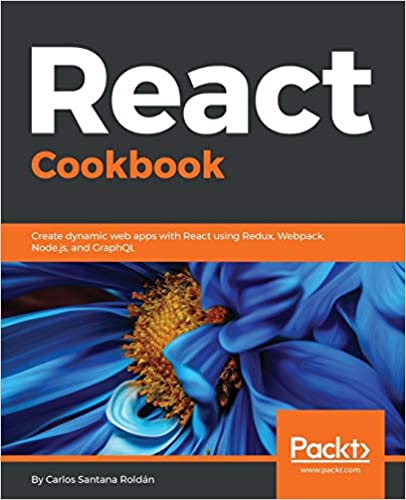React Firebase storage Upload and save url to firestore
Read More
Upload Multiple Images And Store In Database Using PHP And MySQL.
Read More
Books
React Native Cookbook: Recipes for solving common React Native development problems
If you are a developer looking to create mobile applications with maximized code reusability and minimized cost, React Native is what you need. With this practical guide, you’ll be able to build attractive UIs, tackle common problems in mobile development, and achieve improved performance in mobile environments.
This book starts by covering the common techniques for React Native customization and helps you set up your development platforms. Over the course of the book, you’ll work through a wide variety of recipes that help you create, style, and animate your apps with built-in React Native and custom third-party components. You’ll also develop real-world browser-based authentication, build a fully functional audio player, and integrate Google Maps in your apps. This book will help you explore different strategies for working with data, including leveraging the popular Redux library and optimizing your app’s dataflow. You’ll also learn how to write native device functionality for new and existing React Native projects and how app deployment works.
By the end of this book, you’ll be equipped with tips and tricks to write efficient code and have the skills to build full iOS and Android applications using React Native.
What you will learn
Build UI features and components using React Native
Create advanced animations for UI components
Develop universal apps that run on phones and tablets
Leverage Redux to manage application flow and data
Expose both custom native UI components and application logic to React Native
Employ open source third-party plugins to create React Native apps
Who this book is for
If you’re a JavaScript developer looking for a practical guide for developing feature-rich mobile apps using React Native, this book is for you. Though not necessary, some experience of working with React will help you understand the React Native concepts covered in this book easily.
While React Native development can be done on a Windows machine, certain aspects, such as running your apps on iOS devices and in the iOS simulator, or editing native code with Xcode, can only be done with a Mac.
Beginning API Development with Node.js: Build highly scalable, developer-friendly APIs for the modern web with JavaScript and Node.js
Using the same framework to build both server and client-side applications saves you time and money. This book teaches you how you can use JavaScript and Node.js to build highly scalable APIs that work well with lightweight cross-platform client applications. It begins with the basics of Node.js in the context of backend development, and quickly leads you through the creation of an example client that pairs up with a fully authenticated API implementation. By the end of the book, you’ll have the skills and exposure required to get hands-on with your own API development project.
What you will learn
Understand how Node.js works, its trends, and where it is being used now
Learn about application modularization and built-in Node.js modules
Use the npm third-party module registry to extend your application
Gain an understanding of asynchronous programming with Node.js
Develop scalable and high-performing APIs using hapi.js and Knex.js
Write unit tests for your APIs to ensure reliability and maintainability
Who this book is for
This book is ideal for developers who already understand JavaScript and are looking for a quick no-frills introduction to API development with Node.js. Though prior experience with other server-side technologies such as Python, PHP, ASP.NET, Ruby will help, it’s not essential to have a background in backend development before getting started.
Mastering Node.js
Expert techniques for building fast servers and scalable, real-time network applications with minimal effort; rewritten for Node.js 8 and Node.js 9 About This Book * Packed with practical examples and explanations, Mastering Node.js contains everything you need to take your applications to the next level. * Unleash the full potential of Node.js 9 to build real-time and scalable applications. * Gain in-depth knowledge of asynchronous programming, event loops, and parallel data processing. * Explore Node’s innovative event-non-blocking design, and build professional applications with the help of detailed examples. Who This Book Is For This book is targeted at JavaScript developers who want to take an in-depth look at the latest Node.js framework to create faster, scalable, real-time backend applications. Basic JavaScript programming knowledge-and also some previous Node.js development experience-are mandatory to get the best out of this book What You Will Learn * Build an Electron desktop app using Node that manages a filesystem * Explore Streams and understand how they apply to building networked services * Develop and deploy an SMS-driven customer service application * Use WebSockets for rapid bi-directional communication * Construct serverless applications with Amazon Lambda * Test and debug with headless browsers, CPU profiling, Mocha, Sinon, and more * Scale applications vertically and horizontally across multiple cores and web services In Detail Node.js, a modern development environment that enables developers to write server- and client-side code with JavaScript, thus becoming a popular choice among developers. This book covers the features of Node that are especially helpful to developers creating highly concurrent real-time applications. It takes you on a tour of Node’s innovative event non-blocking design, showing you how to build professional applications. This edition has been updated to cover the latest features of Node 9 and ES6. All code examples and demo applications have been completely rewritten using the latest techniques, introducing Promises, functional programming, async/await, and other cutting-edge patterns for writing JavaScript code. Learn how to use microservices to simplify the design and composition of distributed systems. From building serverless cloud functions to native C++ plugins, from chatbots to massively scalable SMS-driven applications, you’ll be prepared for building the next generation of distributed software. By the end of this book, you’ll be building better Node applications more quickly, with less code and more power, and know how to run them at scale in production environments. Style and approach Mastering Node.js contains all of the examples and explanations you’ll need to build applications in a short amount of time and at a low cost, running rapidly and at scale.
Advanced Node.js Development: Master Node.js by building real-world applications
Advanced Node.js Development is a practical, project-based book that provides you with all you need to progress as a Node.js developer. Node is a ubiquitous technology on the modern web, and an essential part of any web developer’s toolkit. If you’re looking to create real-world Node applications, or you want to switch careers or launch a side-project to generate some extra income, then you’re in the right place. This book was written around a single goal: turning you into a professional Node developer capable of developing, testing, and deploying real-world production applications.
There’s no better time to dive in. According to the 2018 Stack Overflow Survey, Node is in the top ten for back-end popularity and back-end salary. This book is built from the ground up around the latest version of Node.js (version 9.x.x). You’ll be learning all the cutting-edge features available only in the latest software versions.
This book delivers advanced skills that you need to become a professional Node developer. Along this journey you’ll create your own API, you’ll build a full real-time web app and create projects that apply the latest Async and Await technologies. Andrew Mead maps everything out for you in this book so that you can learn how to build powerful Node.js projects in a comprehensive, easy-to-follow package designed to get you up and running quickly.
What you will learn
Develop, test, and deploy real-world Node.js applications
Master Node.js by building practical, working examples
Use awesome third-party Node modules such as MongoDB, Mongoose, Socket.io, and Express
Create real-time web applications
Explore async and await in ES7
Who this book is for
This book is for anyone looking to launch their own Node applications, switch careers, or freelance as a Node developer. You should have a basic understanding of JavaScript in order to follow this book. This book follows directly on from Learning Node.js Development, but more advanced readers can benefit from this book without having read the first part.
React js: Learning React js Library From Scratch
In this book, we take you on a fun, hands-on and pragmatic journey to master React from a web development point of view. You’ll start building React apps within minutes. Every section is written in a bite-sized manner and straight to the point as I don’t want to waste your time (and most certainly mine) on the content you don’t need. In the end, you will have what it takes to develop a real-life app.Facebook’s React has changed the way we think about web applications and user interface development. Due to its design, you can use it beyond web. A feature known as the Virtual DOM enables this.In this chapter we’ll go through some of the basic ideas behind the library so you understand React a little better before moving on.What is React?React is a JavaScript library that forces you to think in terms of components. This model of thinking fits user interfaces well. Depending on your background it might feel alien at first. You will have to think very carefully about the concept of state and where it belongs.Because state management is a difficult problem, a variety of solutions have appeared. In this book, we’ll start by managing state ourselves and then push it to a Flux implementation known as Alt. There are also implementations available for several other alternatives, such as Redux, MobX, and Cerebral.React is pragmatic in the sense that it contains a set of escape hatches. If the React model doesn’t work for you, it is still possible to revert back to something lower level. For instance, there are hooks that can be used to wrap older logic that relies on the DOM. This breaks the abstraction and ties your code to a specific environment, but sometimes that’s the pragmatic thing to do.One of the fundamental problems of programming is how to deal with state. Suppose you are developing a user interface and want to show the same data in multiple places. How do you make sure the data is consistent?Historically we have mixed the concerns of the DOM and state and tried to manage it there. React solves this problem in a different way. It introduced the concept of the Virtual DOM to the masses.Virtual DOM exists on top of the actual DOM, or some other render target. It solves the state manipulation problem in its own way. Whenever changes are made to it, it figures out the best way to batch the changes to the underlying DOM structure. It is able to propagate changes across its virtual tree as in the image above.Virtual DOM PerformanceHandling the DOM manipulation this way can lead to increased performance. Manipulating the DOM by hand tends to be inefficient and is hard to optimize. By leaving the problem of DOM manipulation to a good implementation, you can save a lot of time and effort.React allows you to tune performance further by implementing hooks to adjust the way the virtual tree is updated. Though this is often an optional step.The biggest cost of Virtual DOM is that the implementation makes React quite big. You can expect the bundle sizes of small applications to be around 150-200 kB minified, React included. gzipping will help, but it’s still big.
React Cookbook: Create dynamic web apps with React using Redux, Webpack, Node.js, and GraphQL
Today’s web demands efficient real-time applications and scalability. If you want to learn to build fast, efficient, and high-performing applications using React 16, this is the book for you. We plunge directly into the heart of all the most important React concepts for you to conquer. Along the way, you’ll learn how to work with the latest ECMAScript features.
You’ll see the fundamentals of Redux and find out how to implement animations. Then, you’ll learn how to create APIs with Node, Firebase, and GraphQL, and improve the performance of our application with Webpack 4.x. You’ll find recipes on implementing server-side rendering, adding unit tests, and debugging. We also cover best practices to deploy a React application to production. Finally, you’ll learn how to create native mobile applications for iOS and Android using React Native.
By the end of the book, you’ll be saved from a lot of trial and error and developmental headaches, and you’ll be on the road to becoming a React expert.






